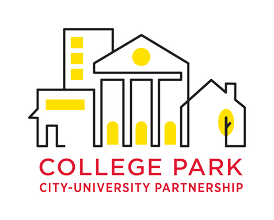Housing as a Human Right

Housing as a Human Right
Recently, I was able to travel to Austin, Texas for the Urban Land Institute’s 2024 conference focused specifically on affordable housing. There were a number of takeaways, which reinforced the central nature of housing as a determinant of community development.
Affordable housing continues to be a trending topic. The conference was sold out, with several hundred in attendance in Austin. Notably, while I saw many people with whom I have worked in the affordable housing world over the past several decades, I also saw and met many people relatively new to the sector. From this, it can be inferred that many people continue to evaluate the challenges and come up with potential solutions to the affordable housing challenge within community development.
Exploring Housing as A Human Right: Ron Terwilliger, chair of ULI’s Terwilliger Center for Housing, and chairman-emeritus of Trammel Crow Residential, opened his remarks by saying “I personally believe housing is a human right.” Mr. Terwilliger, responsible for constructing over 300,000 units of housing during his distinguished career, has come to this conclusion from a perspective gleaned from observation and experience. For this reason, he endowed the Center and speaks out often about the challenges of affordable housing.
Affordable housing is about more than multifamily. In the opening session, keynoters Daryl Fairweather, Chief Economist of Redfin and Dana Schoewe, Principal with RCLCO, noted that we are in an environment of relatively high interest rates, combined with the fact that many Baby Boomers have owned and occupied their homes for decades and/or with low interest-rate mortgages along with high home values. Properties are not moving at rates that that have in prior years, and older homeowners may well be in 3–5-bedroom homes with only 1 or 2 people occupying the homes. In effect, there is a misalignment of space and people along with limited supply for sale. On the rental side, affordability challenges are higher than ever, with incomes not even close to matching rent increases., resulting in record levels of renters being cost burdened paying more than 30% (severely cost burdened more than 50%) of income for housing.
Housing Pressures Tighten
1 in 2 Americans are cost burdened*.
Half of Americans are cost-burdened, spending 30%+ of their income on housing.
1.5 million more households are cost burdened*.
Since 2021, 1.5 million additional households became cost burdened.
Building Creative Solutions. The breakout sessions discussed non-traditional partnerships as effective tools in advancing affordability constructs. Examples included the following:
- A church in Austin creating a ground lease on its property and teaming up with Greystar to build several hundred units of student housing (including an affordable component), along with a rebuild of the church.
- A school district carving off some land near a school to build rental housing with a preference for its teachers and priced accordingly.
- A faith-based initiative championed by Enterprise to “train up” church leaders in the basics of real estate to assist them in making complicated decisions on the future of their mission.
- Creative strategies on real estate solutions for unhoused individuals and families to present stability in one part of people’s lives and create a means to address other parts, including employment, education and services.
Housing is about more than the house. Panel discussions touched upon transportation-oriented development (TOD), climate change, walkability, creative financing tools, place-based strategies, walkability, bike-friendly development, concern about food deserts, etc. Developers cannot reduce their analysis to how many units they can build and what zoning and permits they can obtain. Successful developers are thinking more holistically of how a housing development fits into the neighborhood and the region and how it is consistent with local, regional and national housing and community development policies.
My conversations with attendees about the innovative land trust model we have at the Community Preservation Trust in College Park were interesting and fruitful. People are receptive to hearing about a different way of doing things, provided it can demonstrate success. People were intrigued to hear how housing could be made affordable using the land trust to separate the land from the homes (improvements) and how that financial engineering could facilitate real affordability for the long-term.
